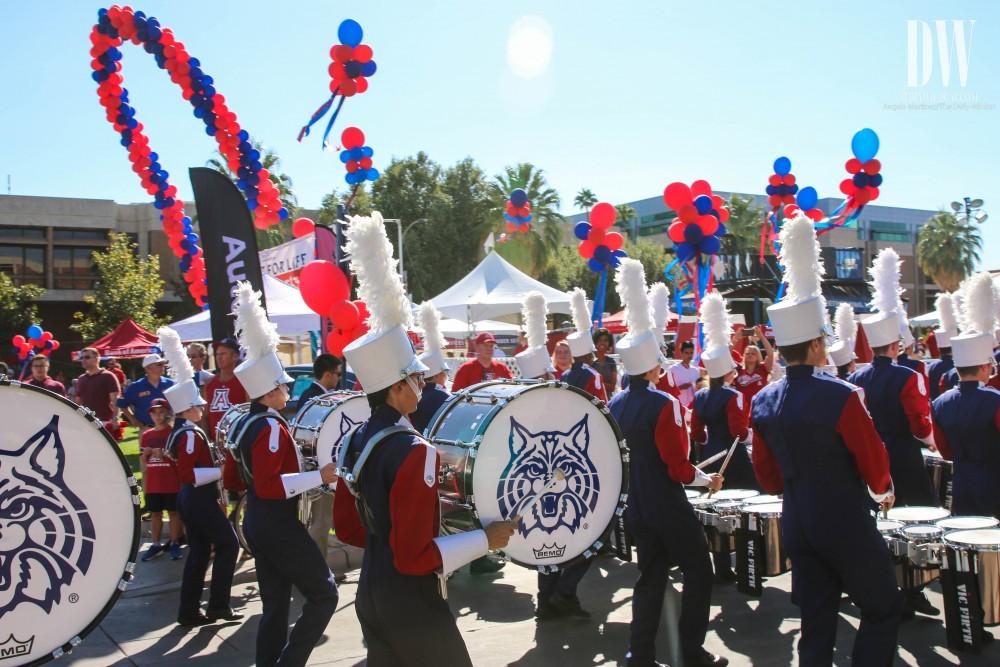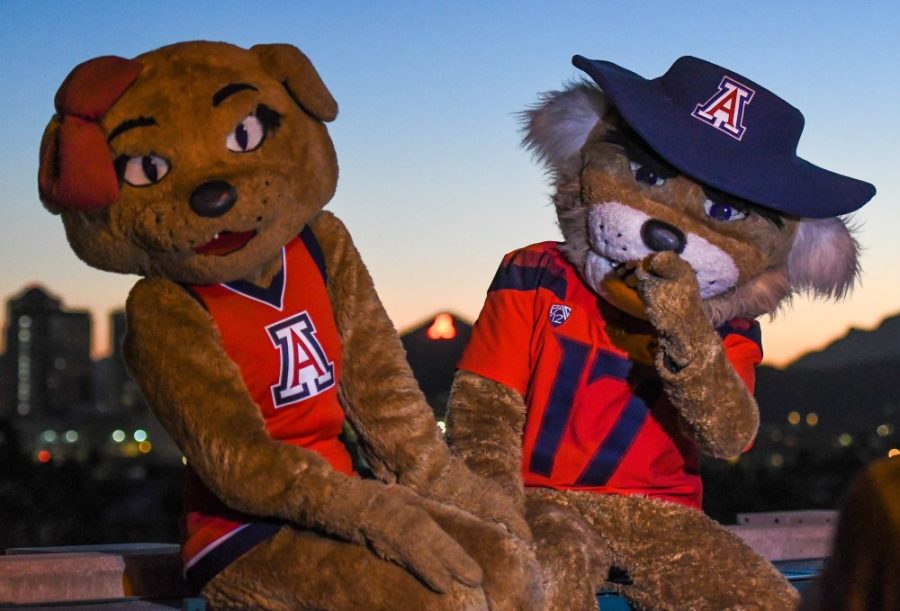Click here to read more content from our 2018 Orientation Guide!
Since 1885, the University of Arizona has been a pillar in its surrounding community. The traditions and history of the campus run deep, with over 130 years of academic research, public advancements and a forever-growing sense of pride and spirit.
According the UA Alumni Association, the university was allocated to the City of Tucson in 1885 under an order by the 13th Arizona Territorial Legislature. With $25,000 to build the university and not much public support, the Arizona Board of Regents bought 40 acres of land from two gamblers and a saloon keeper. In 1887, ground was officially broken on Old Main.
In 1891, classes began with a total of 32 students and six faculty members, all operating out of a single building. Two women and one male made up the UA’s first graduating class in 1895.
The UA has come a long way since then, with more than 200 buildings, 300 acres, 40,000 enrolled students and 15,000 employees, according to the Alumni Association.
The UA Cactus Garden, originally created in the fall of 1891, is also one of the oldest additions to campus, according to Alumni Association. In 1929 it was moved to the east side of Old Main and contained 600 cacti species, which stretched all the way to Highland Avenue. The garden was also home to eight Baja California boojum trees, which were planted in the 1930s. This included the oldest boojum in the country, which died in 2005. The Cactus Garden was eventually dispersed to other areas of campus to make way for the UA Mall construction in the 1950s.
Sentinel Peak, or more commonly known as “A” Mountain, proudly overlooks the University of Arizona and all of Tucson. The University of Arizona “A” was built into the side of this mountain from 1915 to 1916 after civil engineering student and football player Albert H. Cordon was inspired as part of a class project, according to the Alumni Association.

This was quite a project in the early 1900s, taking four months, six horse teams and a full team of students. Today, the “A” serves as an important landmark in the UA community and is set aglow by flares to kick off Homecoming every year. But watch out Wildcats, before the annual Duel in the Desert game against ASU, you might catch some Sun Devils lurking around “A” Mountain.
Perhaps one of the most important and long-standing traditions of the University of Arizona is its official motto, “Bear Down.” The legend of this motto began over 90 years ago with the death of quarterback and student body president John “Button” Salmon on Oct. 19, 1926.
According to the Arizona Daily Star, Salmon was in a car accident while on his way to Phoenix to celebrate a Wildcat win. He was thrown from his vehicle and suffered a spinal cord injury. On his last visit to the hospital before Salmon died, Coach J.F. “Pop” McKale allegedly asked if Salmon had a message for the team. Salmon did.
During a pre-game huddle at New Mexico State, the coach relayed this message; “Tell them … tell them to bear down.” The phrase caught on quickly and was even painted in large, bold letters across the top of a UA building, now known as “Bear Down Gym.”
RELATED: One year in, Robbins’ fingerprints evident around campus
While the official UA fight song, “Fight! Wildcats! Fight!,” was written in 1929 by Douglas Holsclaw, the unofficial fight song, “Bear Down, Arizona,” is more commonly known. “Bear Down Arizona!” was written in 1952 when Jack K. Lee was flying back to Michigan from Tucson, where he interviewed to become the next UA Director of Bands. His plane flew directly over the university, where he saw the words “Bear Down” across the top of a building. According to the Alumni Association, by the time he landed, Lee had written the lyrics to the song on the back of airsickness bag. He was offered the job as director a couple of weeks later.
According to the Alumni Association, “Bear Down Arizona!” was first performed by the Pride of Arizona later in 1952. This award-winning marching band was named one of the top five college marching bands in the country by the College Band Directors National Association in 2009.

While the marching band has been a part of UA culture since 1902, they didn’t perform in their first halftime show until 1922. The Pride of Arizona has also performed at several historical events, including the very first Super Bowl in 1967, as well as the inauguration of President Jimmy Carter in 1977. In 1995, Director Jay C. Rees transformed the Pride of Arizona into “The World’s First Alternative Music Marching Band,” and has since performed the music of artists such as Muse, Radiohead, Tears for Fears, The Beatles and Bruno Mars.
According to the Alumni Association, the wildcat became the official mascot of the University of Arizona in 1914, when the LA Times wrote that the Arizona football team “showed the fight of wildcats” during a game against Occidental College, who were the California champions at the time. A few weeks later, the Wildcats won their first ever Homecoming game against Pomona College.
Before the introduction of Wilbur and Wilma Wildcat, the UA actually purchased a live bobcat in 1915, which they called “Rufus Arizona.” According to the Arizona Daily Star, the UA’s official mascot died shortly after on April 17, 1916. The Arizona Daily Wildcat sadly reported that “while endeavoring to perform gymnastics stunts in the limbs of a tree to which he was tied, Rufus Arizona … fell and was hung.” The UA used live mascots until the mid-1950s.
RELATED: UA strategic plan; Where are we now?
It wasn’t until 1959 that Wilbur Wildcat appeared at his first football game and became the university’s official mascot. Wilma was introduced to the UA in 1986 when Wilbur met her on a blind date, according to the UA Alumni Association. The power couple was married later that year, on Nov. 21, before a football game against ASU.
The University of Arizona, with its rich history and traditions, provides students with a unique student life experience and exciting sense of spirit. Wildcats take pride in where this university began, where it is going and make it a priority to keep these valuable traditions alive.
As incoming students and families, you will have a chance to immerse yourself within this culture and continue to forge your own traditions to keep Wildcat pride alive. Welcome, and Bear Down!
Follow Jasmine Demers on Twitter









